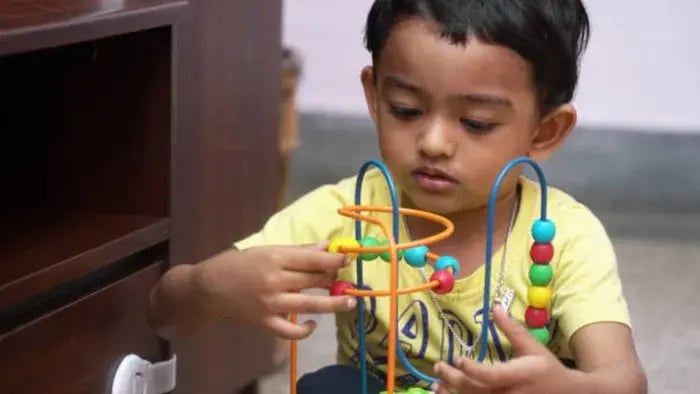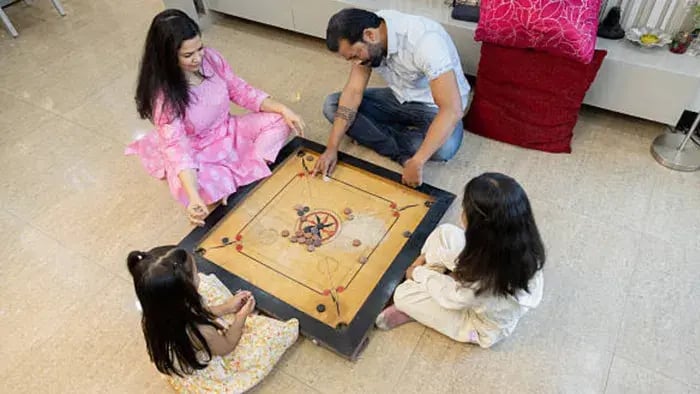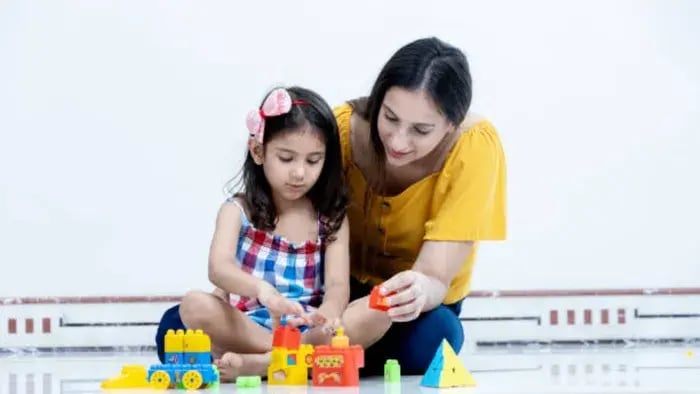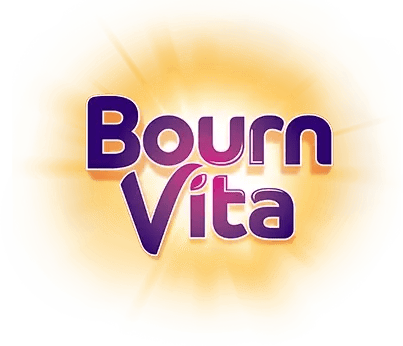- Pasta Threading
- Sponge Squeezing Race
- Sticker Sorting
- Clothespin Pick-Up
- Button Sorting Box
- Paper Tearing Art
- Homemade Play-Dough
Introduction

Little hands are busy hands, and the more they move, the more they grow. Fine motor skills, like holding a crayon, buttoning a shirt, or using scissors, are a big part of early development. These small movements build hand strength, coordination, and focus, all of which are essential for writing, self-care, and even classroom tasks later on.
The best part? You don’t need fancy tools or toys to help preschoolers practice these skills. Everyday items, such as clothespins, sponges, pasta, or even an old box, can be turned into fun activities that keep little fingers moving and minds engaged. These moments of play also encourage independence and creativity, giving your child a chance to explore, learn, and grow at their own pace.
Whether it’s pouring, picking, threading or squeezing, fine motor play is one of the most natural ways for preschoolers to build confidence in what their hands can do. With a few things around the house and a bit of imagination, your child can have meaningful playtime that supports their growth and keeps them happily busy.
7 Fine Motor Activities for Preschoolers Using Items at Home

Little hands learn big things through play. Fine motor activities help preschoolers build the hand strength and coordination they’ll need for essential tasks like holding a pencil, tying shoelaces or buttoning their clothes. Some of the best fine motor exercises can be done using everyday things lying around your house. These activities not only support early childhood development but also spark creativity and keep your little one joyfully engaged. Let’s get started with seven fun, simple, and meaningful ways to support your preschooler’s growing skills at home.
Pasta Threading
Give your child a handful of dry pasta with large holes, like penne, and a shoelace or ribbon with one end taped to prevent fraying. Ask them to thread the pasta onto the lace like making a necklace. According to a study published in Children (Basel). 2021, this activity builds fine finger control, bilateral coordination (using both hands together,) and patience.
Sponge Squeezing Race
Fill one bowl with water and leave another empty. Give your child a sponge and ask them to transfer water from one bowl to the other using only the sponge. As per a study published in J Health Popul Nutr. 2024, this squeezing motion builds the small muscles in the hands and wrists, improving grip and endurance.
Sticker Sorting
Give your child a sheet of stickers and a blank piece of paper. Ask them to peel the stickers and place them on specific shapes or letters on the page. According to ERIC, this sharpens finger dexterity, visual-motor integration, and early writing skills. Choosing where to stick each shape also helps with decision-making.
Clothespin Pick-Up
Gather clothespins and small objects, such as cotton balls, pom-poms, or small toys. Place the objects in a bowl and ask your child to use the clothespins to pick up one at a time and move them to another container. A study published in the Indian J Plast Surg. In 2021, this pinching action strengthens the thumb and fingers, builds control, and the pincer grasp needed for writing and self-care activities like buttoning.
Button Sorting Box
Collect a mix of buttons in different colors, sizes, and shapes. Give your child an egg carton or muffin tray and ask them to sort the buttons by one or more properties, color, size or number of holes. They can use their fingers or tweezers for extra precision. Research conducted by Int J Yoga. 2012, shows that this activity develops visual discrimination, classification, counting, and finger strength.
Paper Tearing Art
Give your child colored paper and ask them to tear it into small pieces. They can then glue the pieces onto a larger sheet to make a mosaic or collage. Tearing engages muscles differently from cutting and supports bilateral coordination. According to a study published in Children (Basel). 2021, it also allows children to express themselves artistically without needing perfect results. This hands-on activity is great for sensory play and patience.
Homemade Play-Dough
Make play-dough at home with simple ingredients like flour, salt, water, and a bit of oil. Ask your child to roll, pinch, flatten, and mould it into shapes, or use cookie cutters to create patterns. According to ERIC, this builds hand and finger muscles and imagination. It also helps with calmness and emotional regulation as the soft, squishy texture is calming for children. Add some natural scents, such as cinnamon or lemon zest, for an added sensory bonus.
Conclusion

Fine motor development doesn’t always need fancy tools or expensive kits. With a few everyday items, you can turn your home into a fun and skill-building playground. These simple activities strengthen little fingers, improve hand-eye coordination, and spark imagination. What matters most is the time you spend together, cheering them on as they learn and grow.
Her love for storytelling began with reading her grandfather’s speeches, where Tarishi saw the power of words in creating lasting memories. Combining her passions for food and writing, she has turned her life into a fulfilling path of sharing stories that celebrate flavours and how food brings communities together.
The views expressed are that of the expert alone.
The information provided in this content is for informational purposes only and should not be considered a substitute for professional medical advice, diagnosis, or treatment. Always seek the advice of your physician or another qualified healthcare provider before making any significant changes to your diet, exercise, or medication routines.
References
https://pmc.ncbi.nlm.nih.gov/articles/PMC3276931/
https://pmc.ncbi.nlm.nih.gov/articles/PMC9015830/
https://files.eric.ed.gov/fulltext/EJ1233771.pdf
















